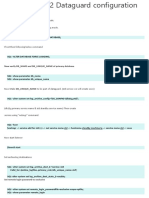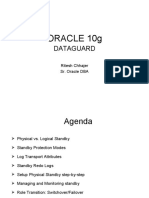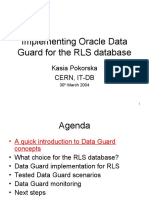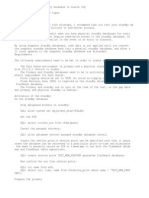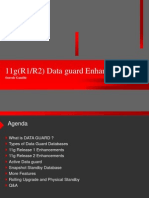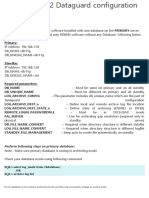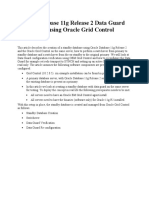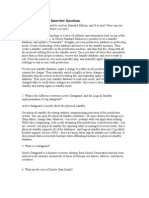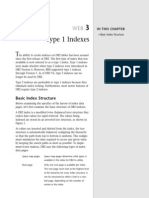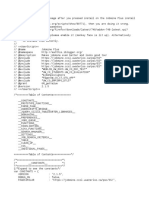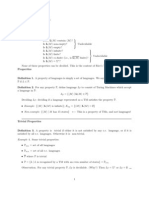0% found this document useful (0 votes)
178 views7 pagesDSDB Data Guard
This document summarizes the key components and functions of Oracle Data Guard including:
1) Log transport services move redo logs from the primary database to standby databases. Log apply services then apply the redo logs to keep the standby databases synchronized with the primary.
2) Gap detection resolves any missing redo logs through automatic or manual methods to ensure the standbys have all logs needed to keep current.
3) Switchovers and failovers allow the primary/standby roles to be reversed gracefully or during disaster recovery to maintain continuous access to database transactions.
Uploaded by
shaikkuwaitCopyright
© Attribution Non-Commercial (BY-NC)
We take content rights seriously. If you suspect this is your content, claim it here.
Available Formats
Download as DOC, PDF, TXT or read online on Scribd
0% found this document useful (0 votes)
178 views7 pagesDSDB Data Guard
This document summarizes the key components and functions of Oracle Data Guard including:
1) Log transport services move redo logs from the primary database to standby databases. Log apply services then apply the redo logs to keep the standby databases synchronized with the primary.
2) Gap detection resolves any missing redo logs through automatic or manual methods to ensure the standbys have all logs needed to keep current.
3) Switchovers and failovers allow the primary/standby roles to be reversed gracefully or during disaster recovery to maintain continuous access to database transactions.
Uploaded by
shaikkuwaitCopyright
© Attribution Non-Commercial (BY-NC)
We take content rights seriously. If you suspect this is your content, claim it here.
Available Formats
Download as DOC, PDF, TXT or read online on Scribd
/ 7













